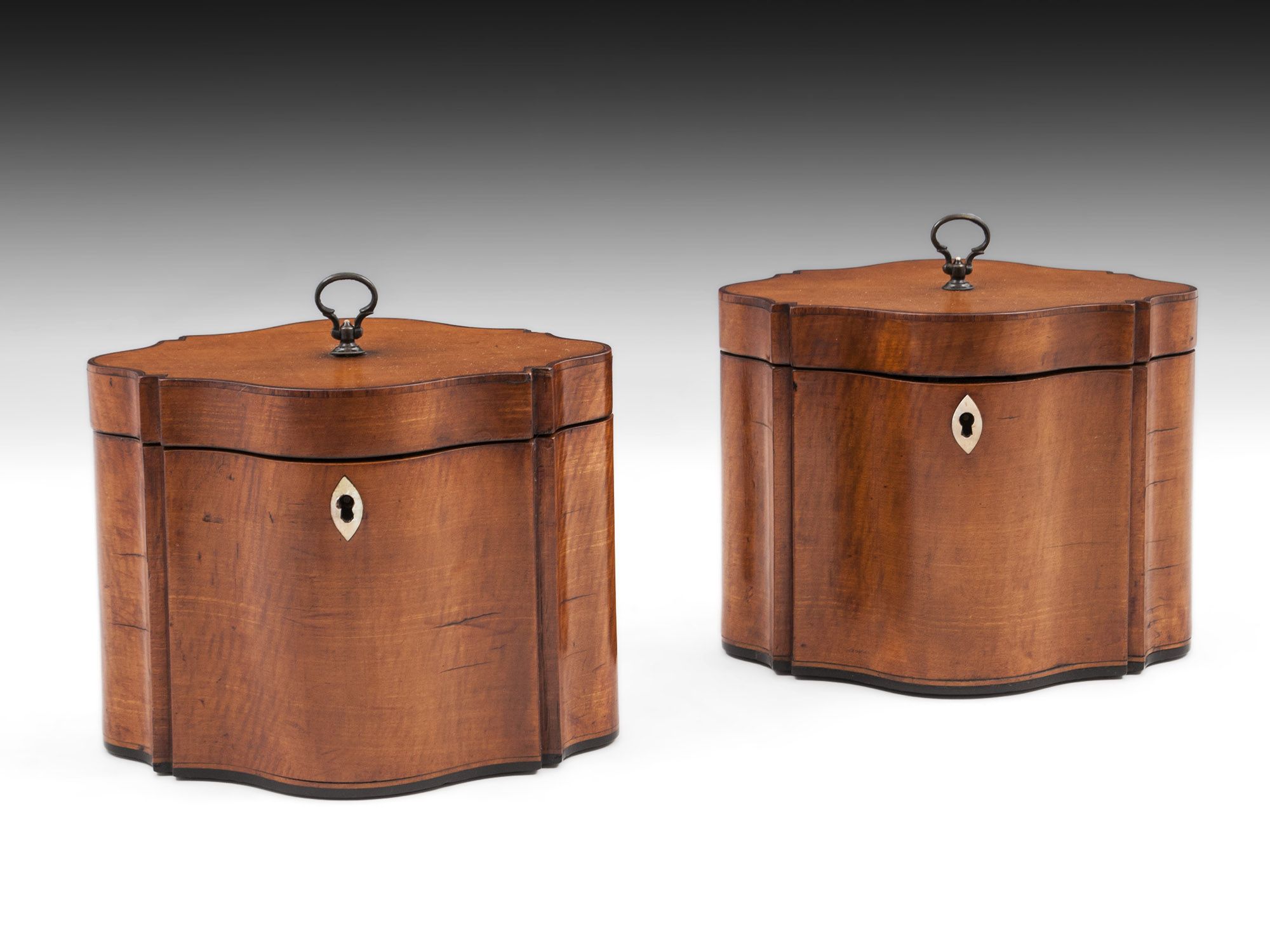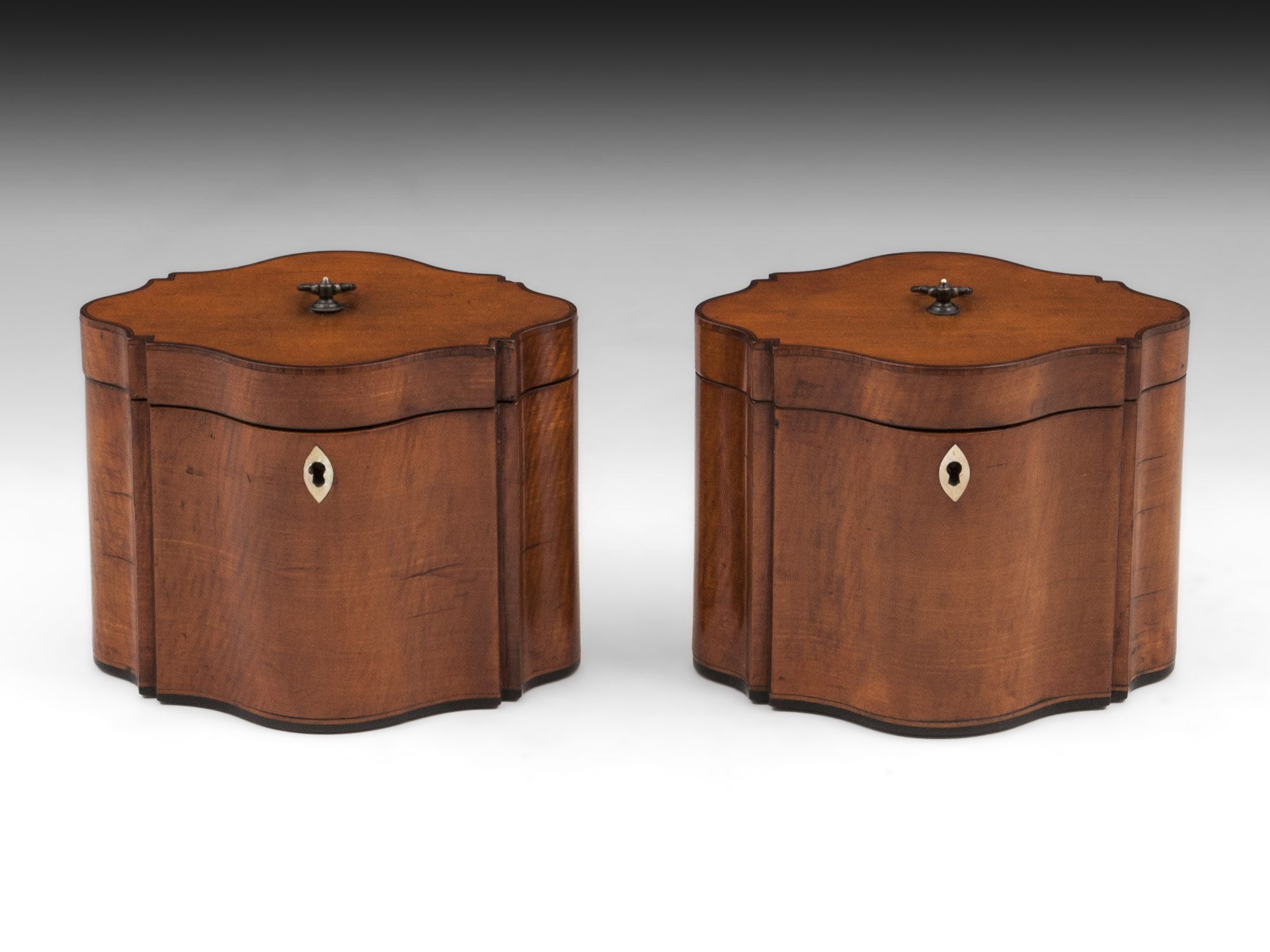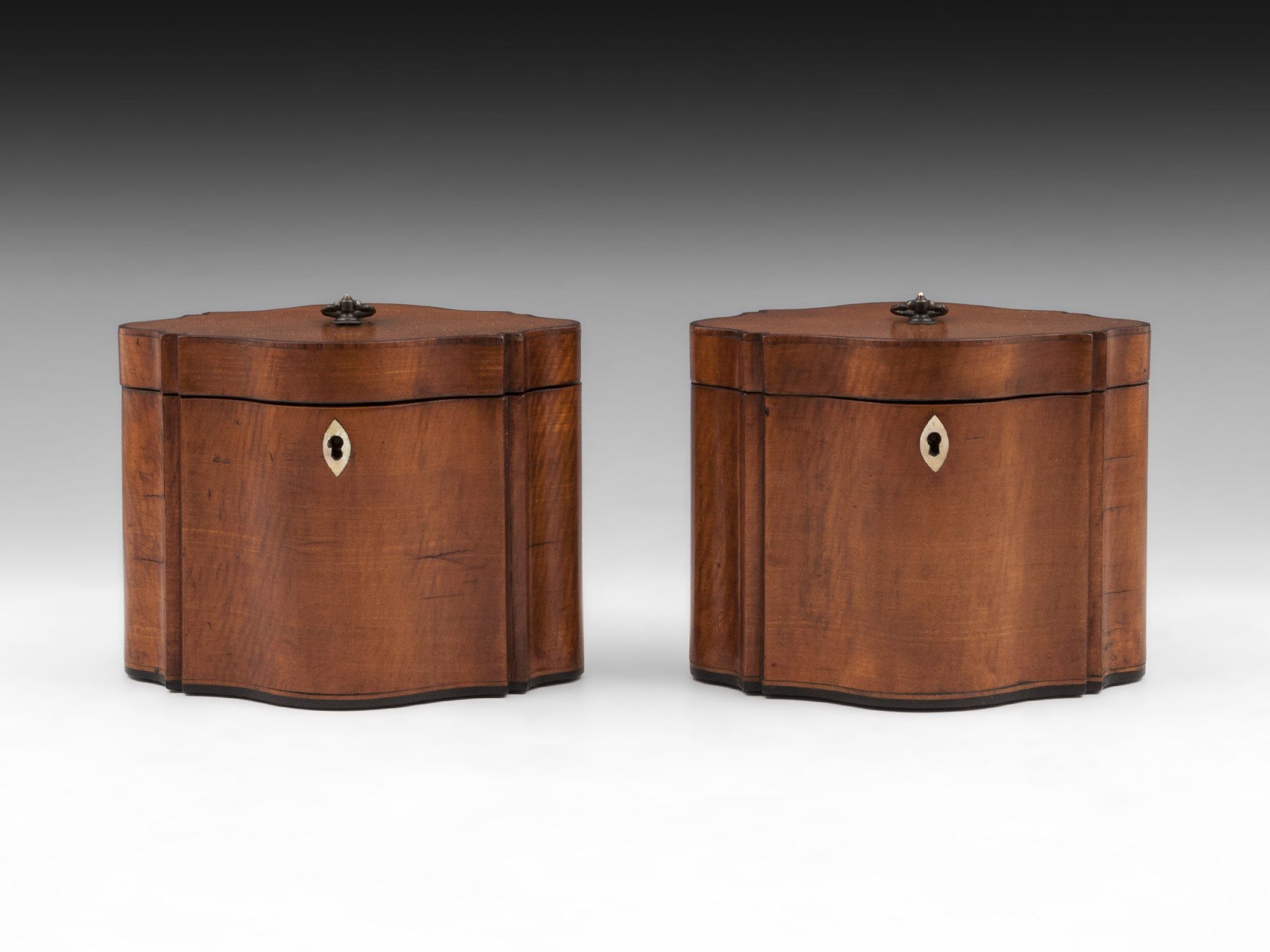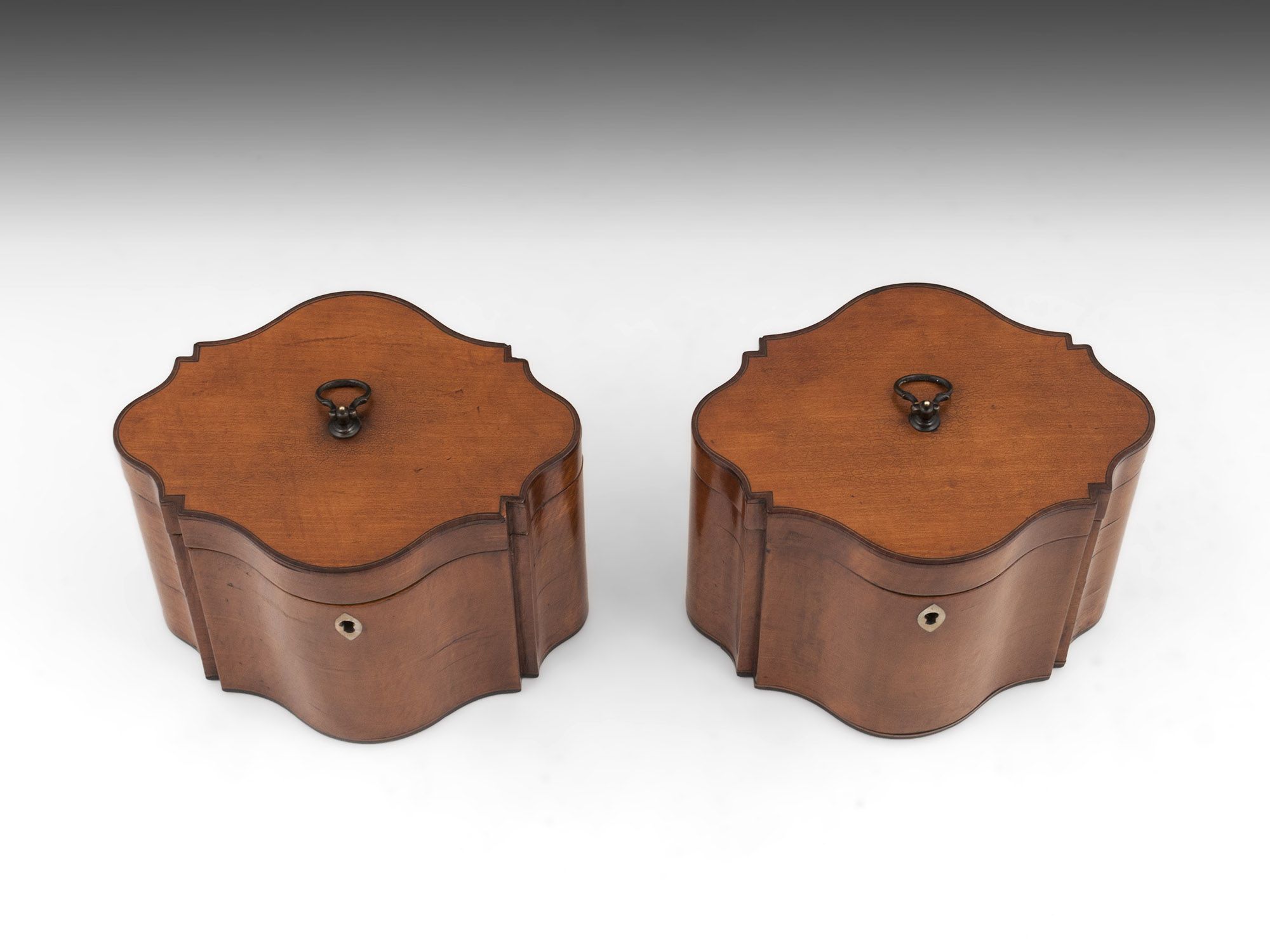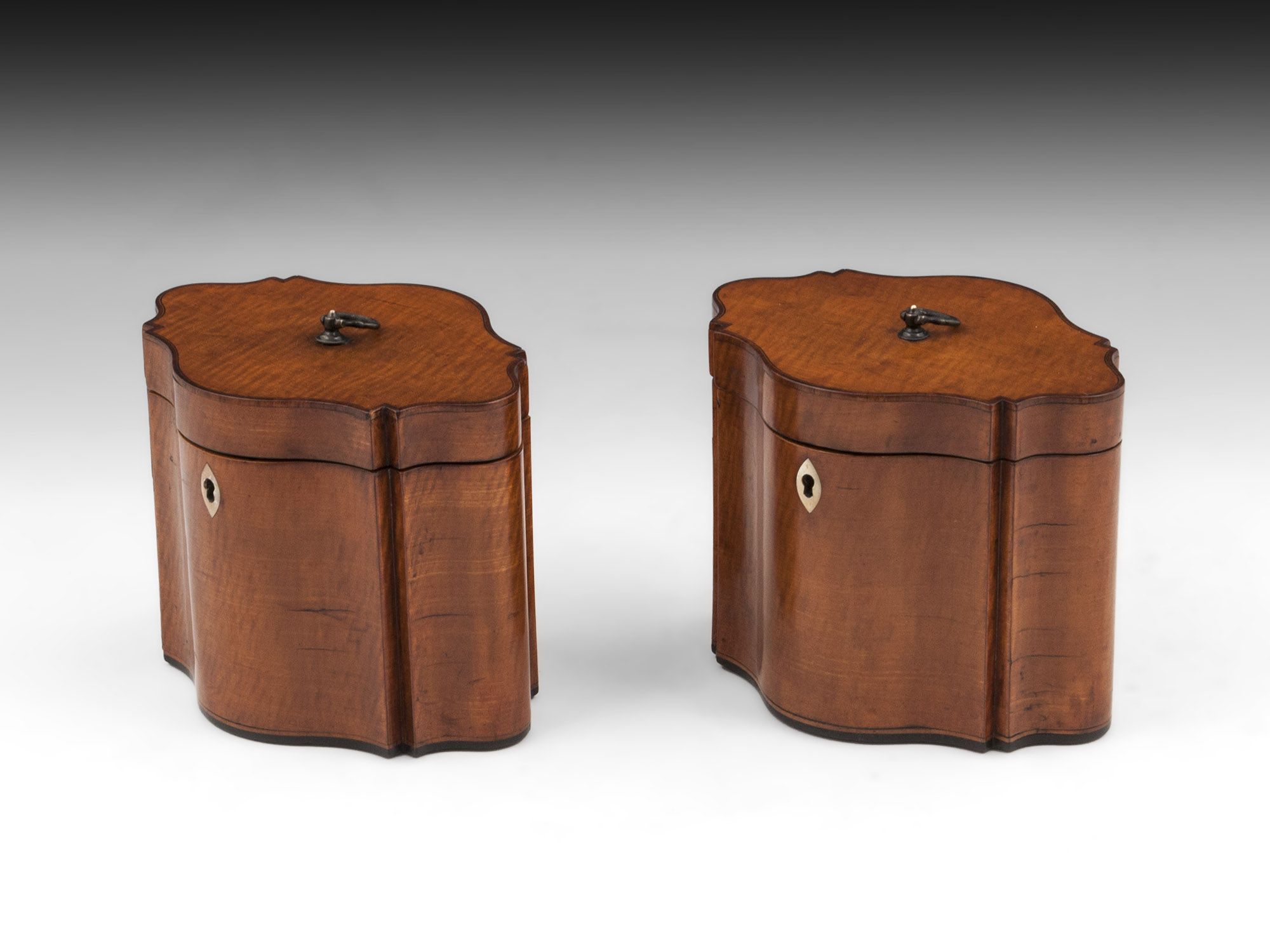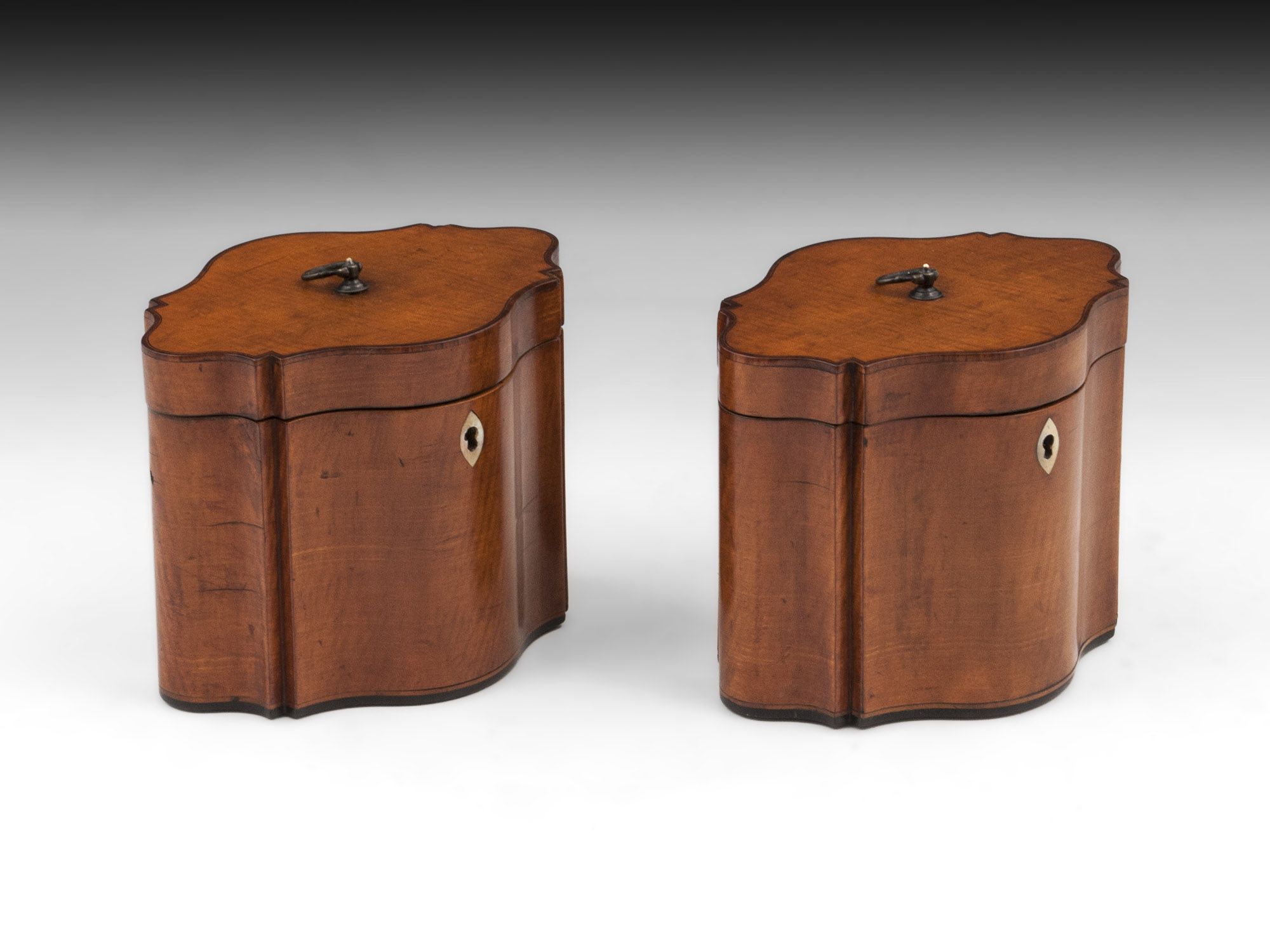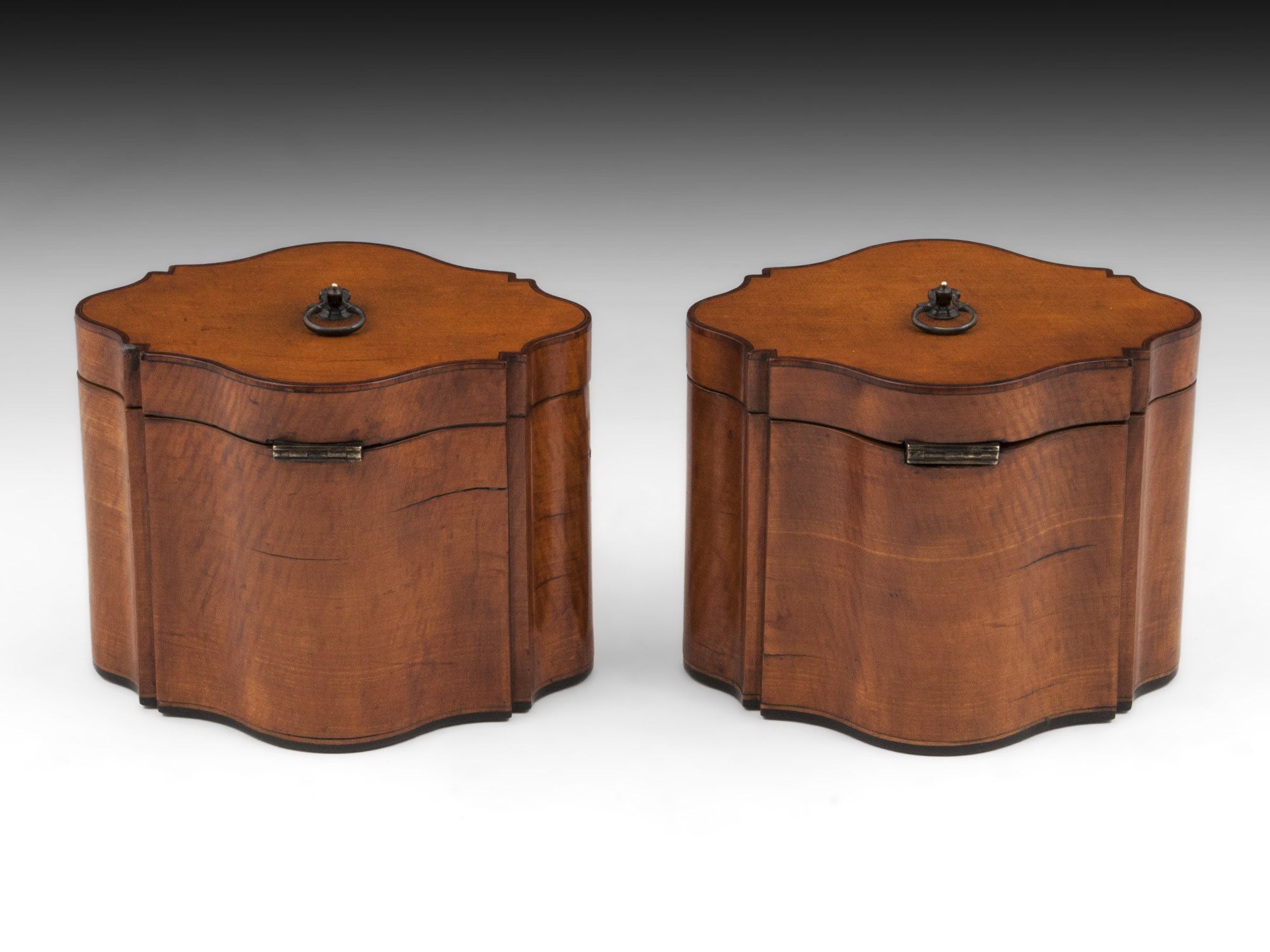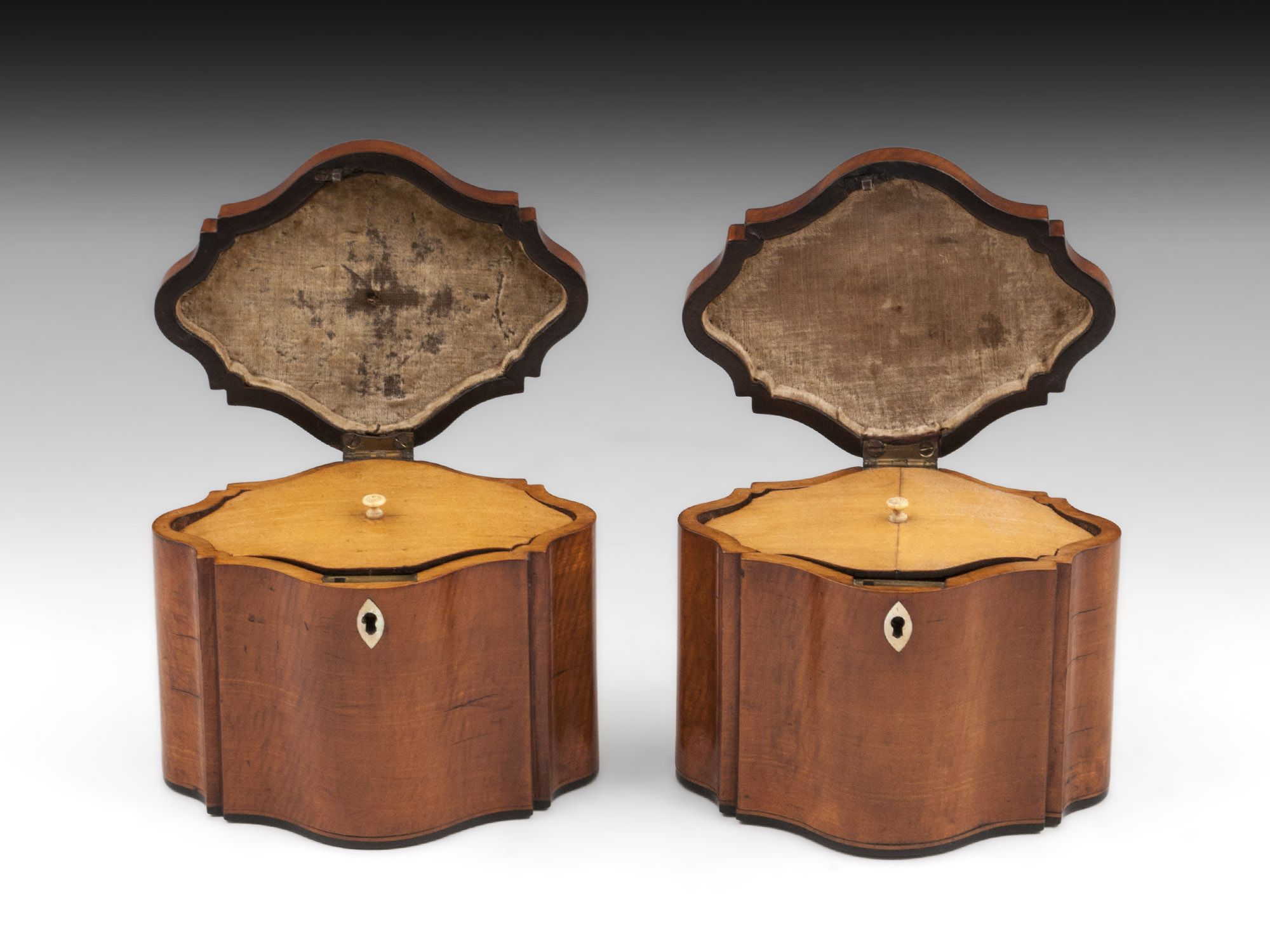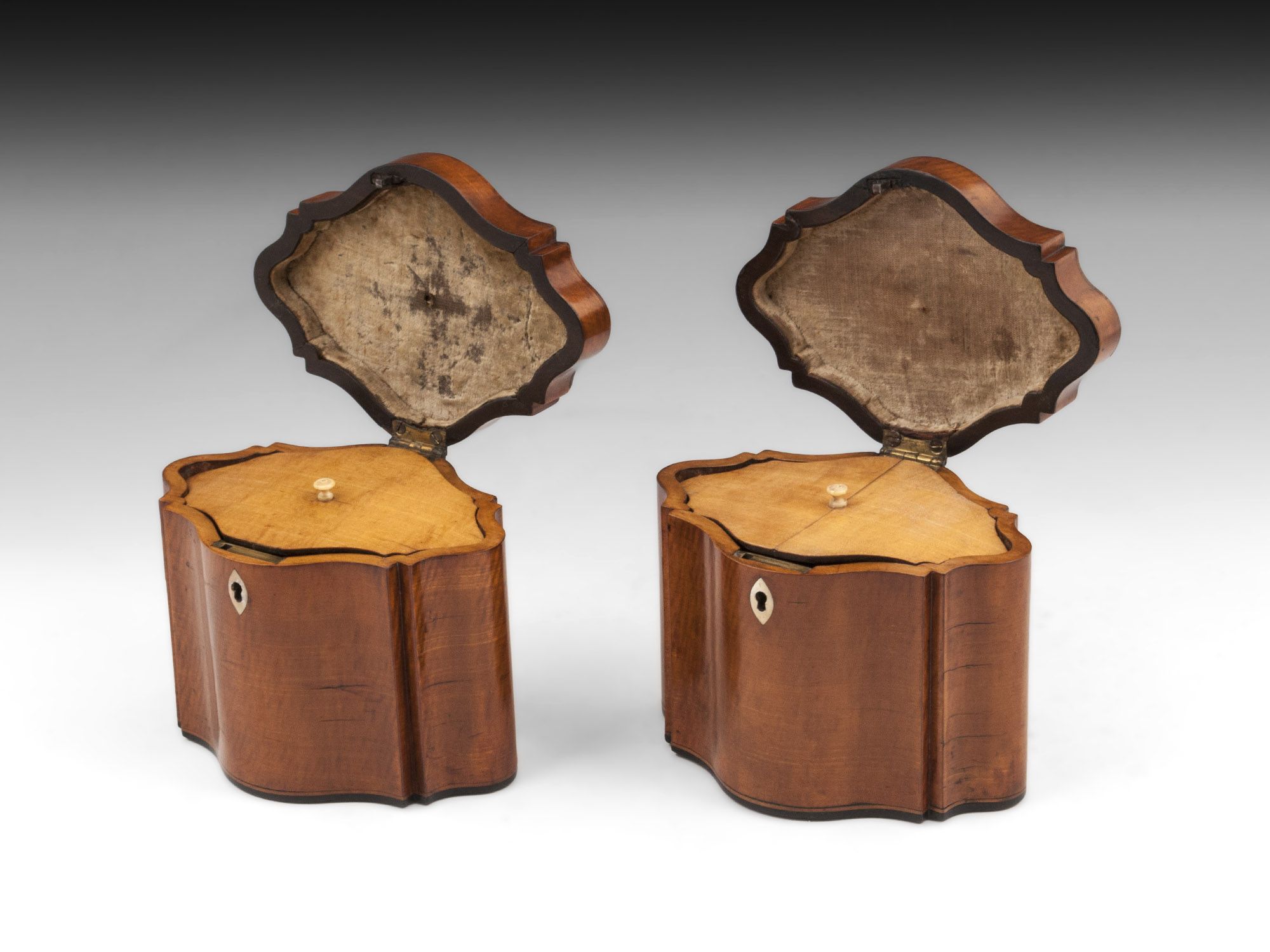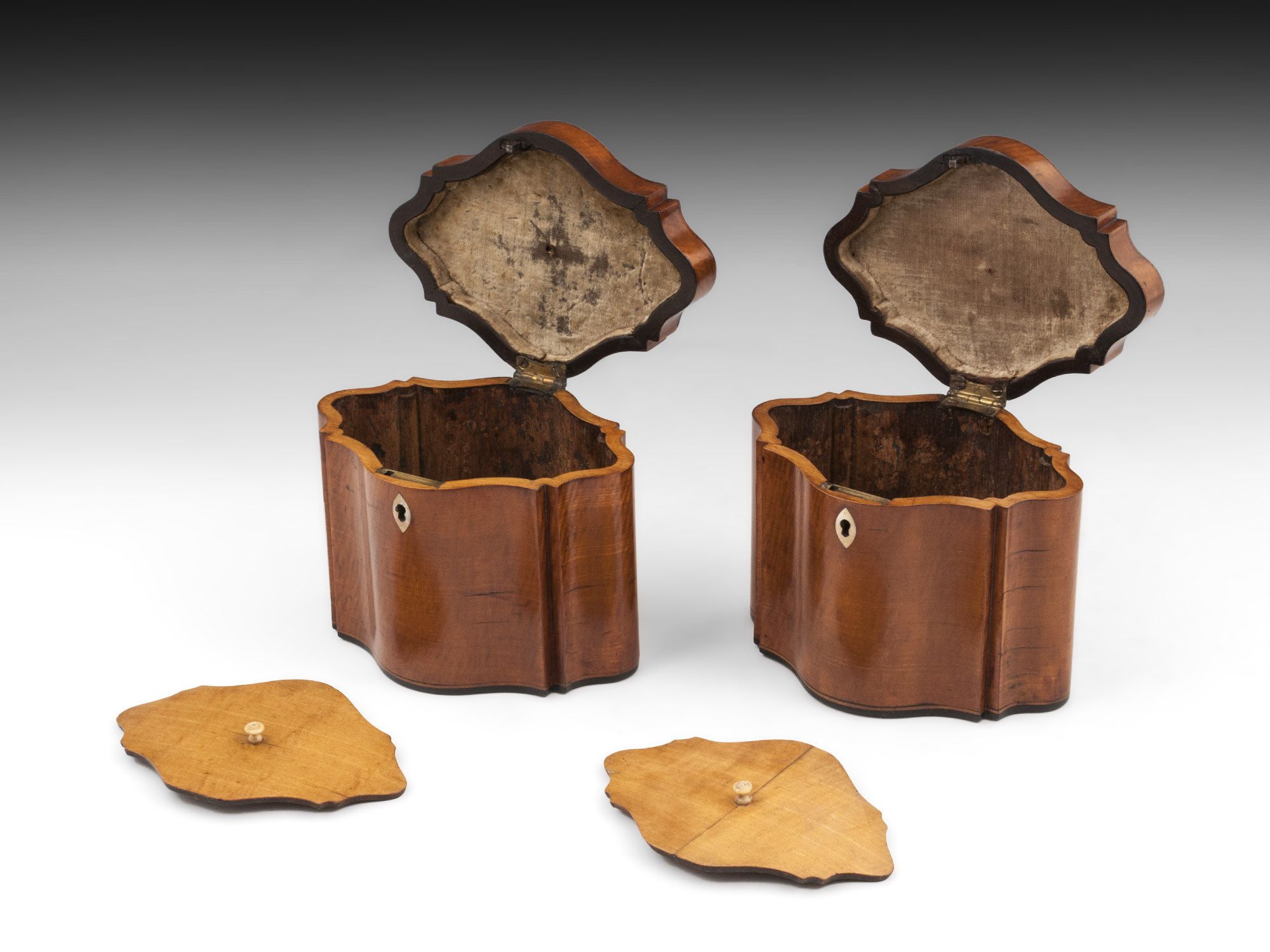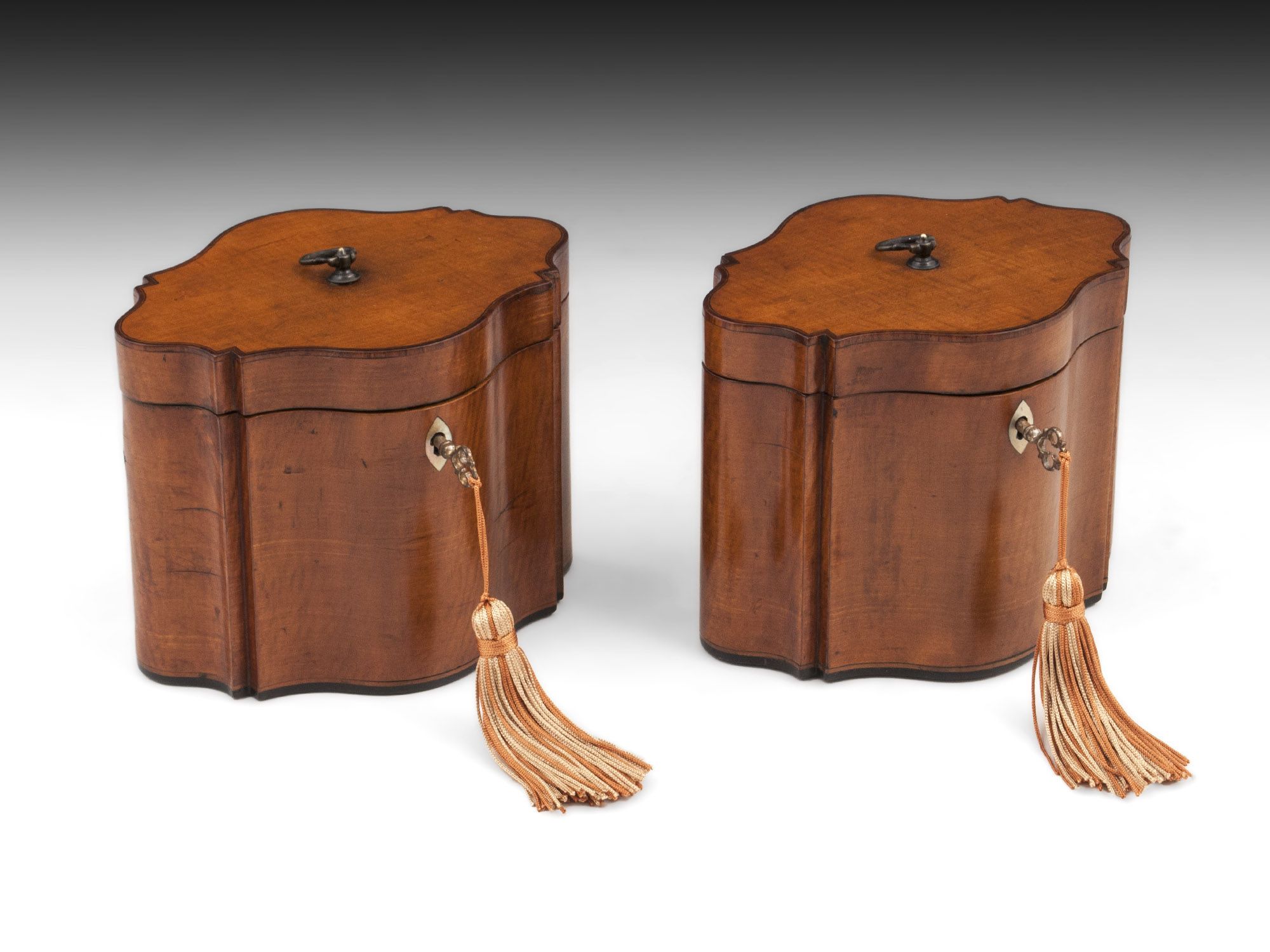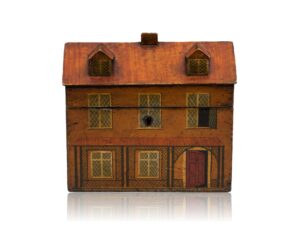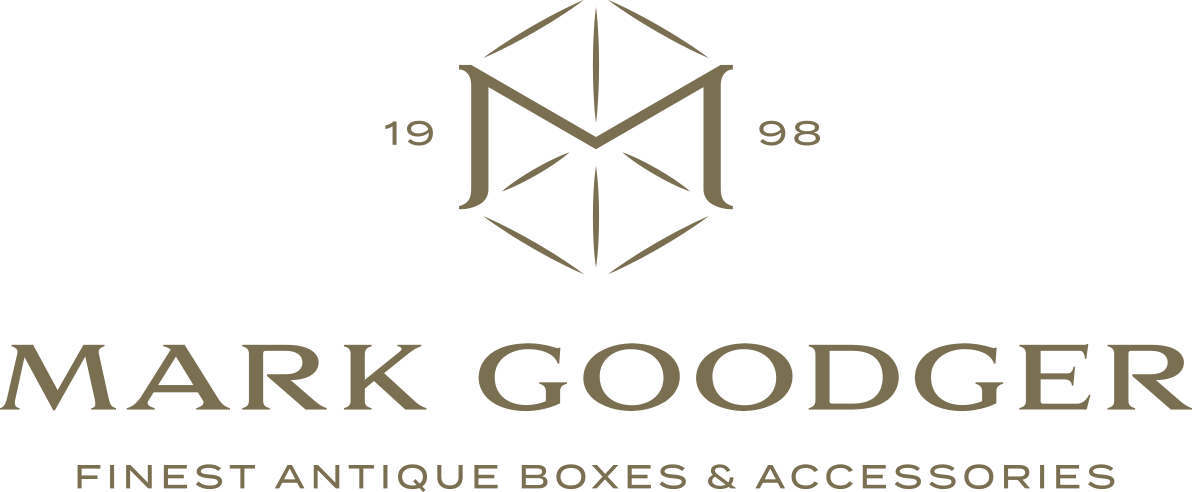Pair of Rare Satinwood Tea Caddies
SOLD
Extremely rare pair of ornate, shaped satinwood Tea Caddieswith a thick kingwood crossbanded top, separated and strung by wafer-thin boxwood and ebony, brass handles and oval shaped escutcheons made of mother of pearl. The interiors of both satinwood tea caddies... Read More
| Dimensions | 15.5 × 11 × 12.5 cm |
|---|---|
| Year | |
| Medium | |
| Country | |
| SKU | 335060 |
Description
Description
Extremely rare pair of ornate, shaped satinwood Tea Caddieswith a thick kingwood crossbanded top, separated and strung by wafer-thin boxwood and ebony, brass handles and oval shaped escutcheons made of mother of pearl.
The interiors of both satinwood tea caddies contain shaped satinwood lids with bone handles, traces of foil lining and come with fully working locks and tasselled keys.
Satinwood is found in India and Sri Lanka. It has a rich golden colour and an almost reflective sheen. Satinwood is traditionally used for high quality furniture.
Hampton Antiques are passionate about tea caddies and are the UK’s pre-eminent and leading antique box specialists. Tea Caddies are noted for the variety of different shapes and sizes made using exotic woods, tortoiseshell, ivory, horn and shagreen. They make a wonderful decorative and functional heirloom in any modern or traditional home.
THE HISTORY OF ANTIQUE TEA CADDIES
In England in the 1700s, tea was an expensive commodity. To keep it safe, people would store it in a lockable Tea Chest or Tea Box, which eventually became known as a Tea Caddy (the word caddy is derived from the Malay “kati”, a unit of weight by which tea was sold). As tea was too expensive to risk leaving in the presence of servants, the caddy would be kept in the drawing room. Subsequently, the Tea Caddy became an important & fashionable accessory for the home.
Tea Caddies were made in a huge variety of styles and materials. Some contained glass bowls. The bowl is believed to be either for sugar, or for the purpose of mixing different varieties of tea to the drinker’s personal taste.
As tea became cheaper in the early 1800s, its use was much more widespread, increasing the demand for tea caddies. However, by the late 1800s when tea could be bought pre-packed, the demand for tea caddies as functional items gradually declined.
Today Tea Caddies are sought after as decorative pieces, in all shapes & forms.
Additional information
Additional information
| Dimensions | 15.5 × 11 × 12.5 cm |
|---|---|
| Year | |
| Medium | |
| Country | |
| SKU | 335060 |
